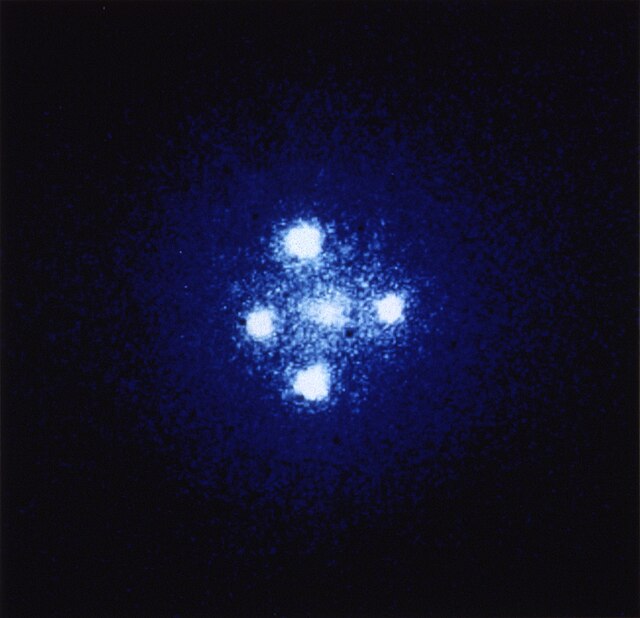SN Refsdal is the first detected multiply-lensed supernova, visible within the field of the galaxy cluster MACS J1149+2223. It was named after Norwegian astrophysicist Sjur Refsdal, who, in 1964, first proposed using time-delayed images from a lensed supernova to study the expansion of the universe. The observations were made using the Hubble Space Telescope.
SN Refsdal (inset picture) and galaxy cluster MACS J1149.6+2223.
The image to the left shows a part of the deep field observation of the galaxy cluster MACS J1149.5+2223 from the Frontier Fields programme. The circle indicates the predicted position of the newest appearance of the supernova. To the lower right the Einstein cross event from late 2014 is visible. The image on the top right shows observations by Hubble from October 2015, taken at the beginning of the observation programme to detect the newest appearance of the supernova. The image on the lower right shows the discovery of the supernova on 11 December 2015, as predicted by several different models.
A gravitational lens is matter, such as a cluster of galaxies or a point particle, that bends light from a distant source as it travels toward an observer. The amount of gravitational lensing is described by Albert Einstein's general theory of relativity. If light is treated as corpuscles travelling at the speed of light, Newtonian physics also predicts the bending of light, but only half of that predicted by general relativity.
One of Eddington's photographs of the 1919 solar eclipse experiment, presented in his 1920 paper announcing its success
Bending light around a massive object from a distant source. The orange arrows show the apparent position of the background source. The white arrows show the path of the light from the true position of the source.
In the formation known as Einstein's Cross, four images of the same distant quasar appear around a foreground galaxy due to strong gravitational lensing.
This image from the NASA/ESA Hubble Space Telescope shows the galaxy cluster MACS J1206.






